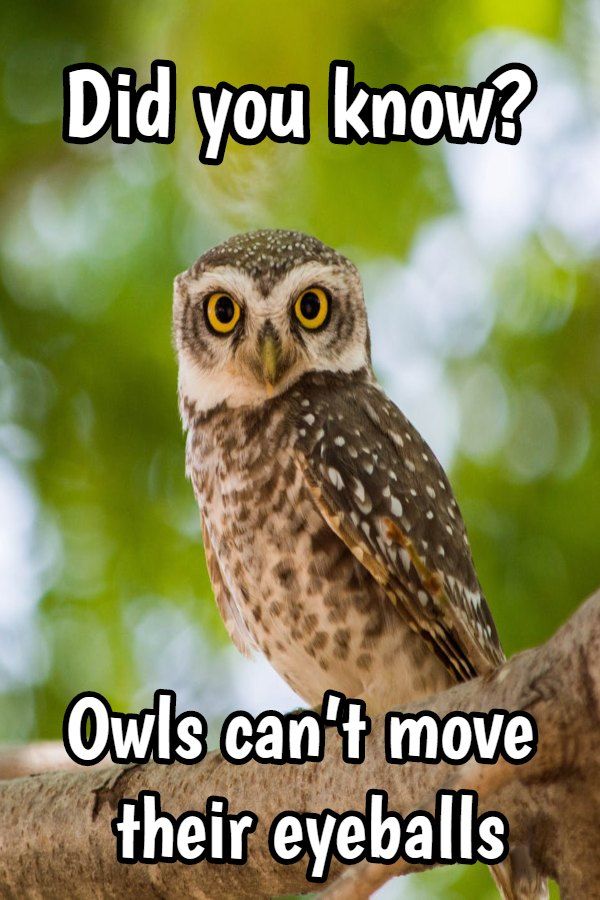Owls, those enigmatic denizens of the night, possess a certain mystique that captivates both children and adults alike. Their silent flight, piercing gaze, and haunting hoots have cemented their place in folklore and popular culture. Beyond their symbolic representation, owls boast a plethora of fascinating biological adaptations and behavioral quirks. Prepare to be astounded as we unveil ten surprising facts about these remarkable avian predators.
1. Asymmetrical Auditory Apertures: Nature’s Stereo System
Unlike most birds, owls possess asymmetrically placed ear openings. One ear is typically located higher on the skull than the other. This seemingly peculiar arrangement serves a critical function: auditory triangulation. By receiving sound signals at slightly different times and intensities, owls can pinpoint the precise location of their prey, even in complete darkness. This spatial acuity allows them to hunt effectively in environments where vision is limited.
2. Facial Discs: Sound Amplifiers of the Night
The distinct facial disc, a concave collection of feathers surrounding an owl’s eyes, isn’t merely for aesthetic appeal. These specialized feathers act as parabolic reflectors, channeling sound waves towards the ear openings. This amplifies even the faintest rustling noises, enabling owls to detect the movements of small rodents hidden beneath leaf litter or snow. The more prominent the facial disc, the greater the auditory amplification.
3. Silent Flight: The Art of Aerial Stealth
Owls are renowned for their silent flight, a characteristic attributed to unique adaptations in their plumage. The leading edges of their flight feathers are serrated, resembling a comb. These serrations break up the flow of air, reducing turbulence and minimizing the noise generated by flapping wings. Furthermore, the soft, velvety texture of their feathers absorbs sound, further contributing to their stealthy approach. This silent flight allows them to ambush prey undetected.
4. Gyrating Necks: A 270-Degree Field of Vision
Owls possess the remarkable ability to rotate their heads up to 270 degrees in either direction. This extensive range of motion is crucial because their eyes are fixed in their sockets, preventing them from moving them laterally. To compensate for this limitation, owls have evolved a highly flexible neck with 14 vertebrae (compared to the 7 vertebrae found in humans). Specialized blood vessels and a network of supportive structures prevent blood from pooling in the brain during these extreme rotations.
5. Regurgitation Pellets: Osteological Archives of the Hunt
Owls swallow their prey whole or in large chunks. Indigestible materials, such as bones, fur, and feathers, are then compacted into a pellet in the proventriculus, a glandular part of the stomach. These pellets are subsequently regurgitated, providing valuable insights into the owl’s diet and the ecosystem it inhabits. Analyzing owl pellets is a common practice in ecological studies, offering a non-invasive method for assessing prey populations.
6. Zygodactyl Feet: A Grip of Steel
Owls possess zygodactyl feet, meaning they have two toes pointing forward and two toes pointing backward. This arrangement provides exceptional grip strength and stability, enabling them to perch securely on branches and grasp prey effectively. Some owls can even rotate one of their hind toes forward, allowing them to walk and climb more easily.
7. Diverse Diet: Opportunistic Carnivores
While often associated with rodents, owls exhibit a diverse diet that varies depending on their species and habitat. Their prey can range from insects and fish to small mammals, birds, and even other owls. Great Horned Owls, for instance, are known to prey on skunks, porcupines, and even domestic cats. This opportunistic feeding behavior allows them to thrive in a variety of environments.
8. Nesting Habits: Cavity Nesters and Beyond
Many owl species are cavity nesters, utilizing tree hollows, abandoned nests of other birds, or even human-made structures as nesting sites. However, some owls, such as the Burrowing Owl, nest underground in abandoned prairie dog burrows. Others, like the Barn Owl, are highly adaptable and will nest in a wide range of locations, including barns, silos, and cliff faces.
9. Nocturnal Prowess: Adaptations for Low-Light Vision
Owls are primarily nocturnal predators, possessing several adaptations that enhance their vision in low-light conditions. Their large eyes contain a high concentration of rod cells, which are highly sensitive to light. They also have a reflective layer behind the retina called the tapetum lucidum, which reflects light back through the retina, increasing the amount of light available to the photoreceptor cells. These adaptations allow them to see with exceptional clarity in near darkness.
10. Global Distribution: From Arctic Tundra to Tropical Rainforests
Owls are found on every continent except Antarctica, inhabiting a wide range of habitats from arctic tundra to tropical rainforests. This widespread distribution reflects their adaptability and ecological importance. From the tiny Elf Owl of the southwestern United States to the enormous Eurasian Eagle-Owl, the diversity of owl species is truly remarkable.
